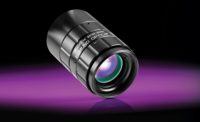The Piranha HS NIR is the newest product in Teledyne DALSA’s High Sensitivity that provides a cost-effective solution for imaging in near-infrared wavelengths.
 The Piranha HS NIR came about after many years of the TeledyneDALSA teams’ experience in TDI technology. Source: TeledyneDALSA |
Italso benefits from time delay and integration technology while meeting the requirements of low light applications. According to Xing-Fei He, Teledyne DALSA Piranha HS NIR product manager, the “Si CCD can have large resolution (8k) and small pixel size (7x7 micron) and has high speed, low dark current, excellent image quality and matured manufacturing processes.” The cameras are capable of bidirectionality with up to 256 stages of selectability and can prevent overexposure with DALSA’s proven 100x anti-blooming.
He says that the idea for the Piranha HS NIR came about after many years of the teams’ experience in time delay and integration (TDI) technology but that it has been in development for about a year. “Our HS-8k/12k TDI is de facto standard for visible imaging in the FPD [flat-panel display] market. We expanded our knowledge into the NIR region with some unique designs that we learned from previous projects to enhance sensitivity in the NIR wavelengths.” He says that there is only one limitation to the product that has to do with the fact that Si can only work up to 1100nm wavelength due to the bandgap (1.1eV). “So if an application requires a longer wavelength, Si CCD doesn’t work.”
But that has not stopped the product from receiving great feedback so far. While it has only been on the market since August of 2012, He says that “initial feedback from key customers who evaluated the HN-8k were very positive.” According to He, the key customers said that the responsivity and image quality were both “super.”
As for competition, the HN 8k camera competes mainly against InGaAs and CCD/CMOS area scan cameras in the solar cell applications field. “Currently there is no clear camera winner for the solar cell market. InGaAs is too expensive and do not have enough resolution (only 1k and 2k available). Area scan CCD/CMOS doesn’t have enough responsivity and its exposure time is too long (about a second),” says He. In fact, the Piranha HS NIR’s bidirectional operation greatly reduces its cost by simplifying the inspection process. Furthermore, He points out, “in solar cell inspection, PL and EL are very weak emission after optical or electrical excitation. Customers need a very sensitive camera with low read noise. HN offers very high sensitivity with about 25e noise. It also has anti-blooming that is required for microcrack inspection with backlight.”
The Piranha HS NIR is an innovative product because, according to He, it “can work for both visible and NIR using one camera. InGaAs works only in the NIR region. In some apps, customers need capture images for in visible and NIR.” He continues by saying, “The innovative idea is to use TDI technology with multiple exposures (256 stages) and sum in the charge domain without noise penalty. This is the core technology for enhancing responsivity. HN camera provides equivalent responsivity to InGaAs sensor for PL and EL detection (peaked around 1100nm). At the same time, it also offers higher resolutions (8k) that are not available from InGaAs technology.” This then cuts system level costs considerably in a vision system, “particularly for systems that use multiple cameras. Another feature is 2x2 and 4x4 binning capability. Customers can use binning to achieve different resolutions.”
Teledyne DALSA states that the product functions using certain TDI stages, up to a maximum of 256, and has an area mode of operation for ease of alignment. The camera can be programmed with up to four user sets of coefficients and can utilize mirroring control, forward / reverse control and flat field correction. So far the Piranha HS NIR has been used for solar cell inspection—micro crack with backlight and PL and EL—as well as printed electronics, plastic film, currency papers, web applications and food and drug inspection. According to Teledyne DALSA, “like the rest of the Piranha HS family, this NIR model provides high performance solutions for low light imaging with large resolutions and unmatched throughput.”
For more information, contact:
Teledyne DALSA
605 McMurray Road
Waterloo, Ontario
Canada N2V 2E9
(519) 886-6000
www.teledynedalsa.com
SPECIFICATIONS
Part Number: HN-80-08K40
Resolution: 8192 x 256
Total Data Rate: 320 MHz
Maximum Line Rate: 34 kHz
Pixel Size: 7 µm
Number of Camera Taps: 8
Output Format:
Camera Link Medium
Size: 150 x 8- x 65 mm
Mass: <800 g
Responsivity: 419 DN/(nJ/cm²) @1000nm, 0 dB gain, 8 bit


